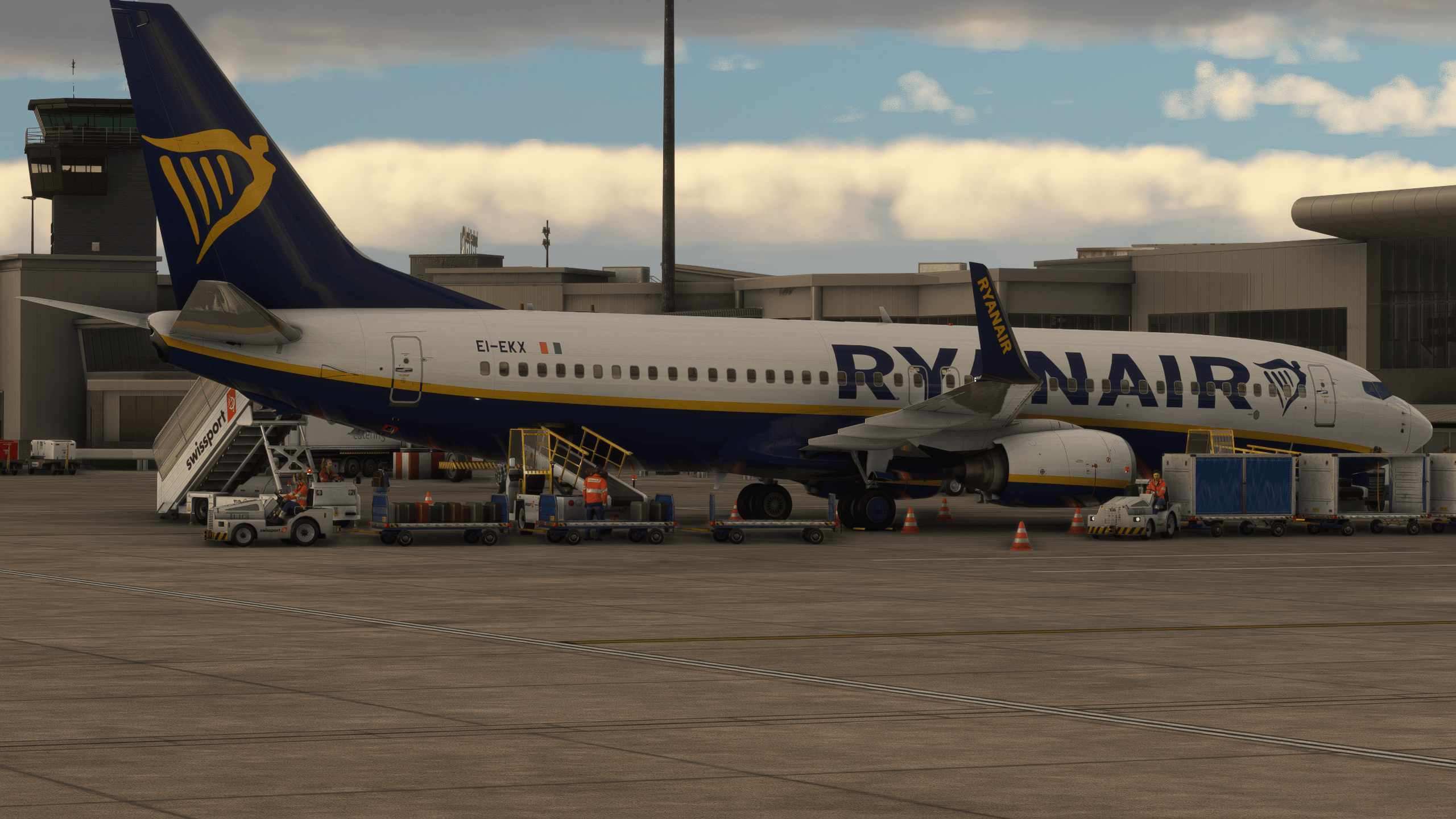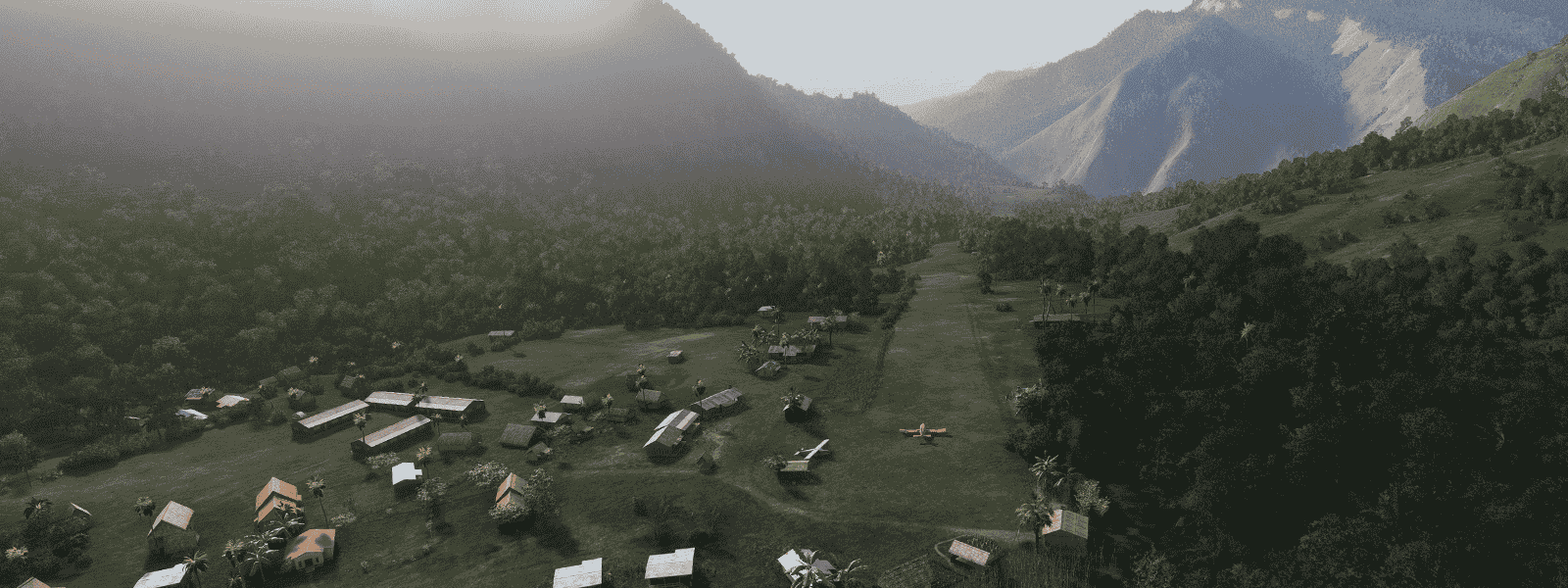Threshold Review: Orbx’s Leeds Bradford V2 for MSFS
December 9, 2023
Introduction
Leeds Bradford Airport (EGNM) is located in Yeadon, a town within the Metropolitan borough of Leeds, in West Yorkshire. It serves North and West Yorkshire with a yearly average of 3.2 million passengers, making it the 13th busiest airport in the United Kingdom.

It was opened on 17 October 1931 as Leeds and Bradford Municipal Aerodrome, or Yeadon Aerodrome. It was initially used for general aviation and flight training, with scheduled flights starting four years after its inauguration. The first destinations were Newcastle, Edinburgh, Blackpool, and the Island of Man.

With passenger traffic in mind, they began constructing a passenger terminal in 1936, but only the first wing was completed before it had to be halted because of WW2. That's also when the 609 Squadron of the Royal Air Force formed at the airport.
The aerodrome was significantly upgraded during World War 2, getting two new runways, a taxiway, and a hangar. It went on to become an important military aircraft testing site. Avro, the British aircraft manufacturer, had a shadow factory beside the airport, where around 5,515 airplanes were manufactured before its eventual closure in 1946.
Commercial flights returned in 1947, and Yeadon Aviation Ltd. was formed a few years later (1953), managing the airport and its Aero Club. The new management brought tremendous growth and a list of new routes, including Jersey, Belfast, Ostend, Southend, and Düsseldorf, in Germany.
In the 1960s, a brand new concrete runway was built, followed by a terminal fire that stole its thunder and had them rebuild it from scratch, as it was made of wood, and nothing was left standing after the incident, which was accidental. The replacement terminal was inaugurated three years later, in 1968. Leeds Bradford was finally jet-ready.
After further runway extensions in the 1980s, the airport finally qualified as a Regional airport, followed by a series of improvements and redevelopments in 1985, attracting the attention of international airlines such as Wardair, which launched a 747 route to Toronto. In 1986, Bradford was visited by a chartered Concorde from Air France, drawing more than 70,000 people to watch the magnificent bird in action.
The terminal was upgraded and expanded in 1996, significantly increasing its passenger handling capabilities and easily accommodating larger airlines such as the Boeing 737.
There were plans to renovate and expand the terminal, creating more departure gates, improving baggage reclaiming facilities, and enlarging immigration and customs facilities. Still, local MPs, environmental action groups, and residents criticized the project due to the potential ecological damage, while the other side of the coin pushed its economic advantages. The decision was then referred to the government, which put a temporary block to examine it further. Said proposal was eventually withdrawn.
A new scheme was proposed in 2023 called "LBA:REGEN," encompassing accessibility improvements, expanded retail and dining facilities, and a better arrival experience, helping them meet their zero emissions goal by 2030. Construction has already started, and it's set to reach completion by 2025.
The airport is an operating base for Jet2.com and Ryanair, with many destinations across Europe and Africa. Aer Lingus, Aurigny, BH Air, easyJet, KLM, TUI Airways, and Wizz also serve it.
The scenery promises an accurate rendition of the airport, with an up-to-date 2023 airport layout, fully-reworked PBR ground poly, custom lighting, LOD optimization to ensure best performance, animated custom jetways, a high-detail ATC tower with animated air traffic controllers, detailed walkway interior, hand-placed animated horses, a detailed spotting area west of runway 14, updated signage, and more.
Installation
The scenery is distributed via Orbx Direct, featuring a one-click install.
First Impressions
Flying into Leeds for the first time was a mixture of curiosity and excitement, as it was one of the few airports in the United Kingdom that I had never visited in-sim, and there is a good reason for that: I was, for the longest time, an Airbus-only kind of person, and LBA is quite Boeing-centric. As soon as Orbx announced Leeds Bradford V2, I knew I had to get my hands on it, for I was no longer an Airbus-only boy and could happily do with hours and hours of Jet2 and Ryanair.

The first flight was an awfully long 35-minute journey from Dublin (EIDW), and I must admit I was a bit scared, given what people say about how sloped the runway is and how harsh the crosswinds can be. The weather was not the best that day, which certainly didn't help, bringing the whole package of clouds, strong winds, and precipitation. I couldn't see anything until I finally could, after breaking through the cloud layer: I was welcomed by the total absence of flatness, very much unlike what I was used to UK-wise. It was like Scotland but without whiskey and kilts. "Beautiful," I thought, repeatedly mashing the F12 key to take screenshots.

Fast forward a few minutes, and I was finally on the Localizer and descending on the glideslope towards runway 14 for the first time. Only a few seconds were separating me from landing at the UK's highest airport, at an incredible 681 feet, and that's about when I realized not only the airport was high, but the runway itself was also quite steep. If a Brazilian living in Minas Gerais says something is steep, you better trust it is steep because we have no such thing as flat lands down here. Everything is either on a hill or downhill or between a valley (it's lovely during summer, let me tell you).

While the runway is quite short at 2,250 meters, stopping was relatively easy, given the massive upward slope. I even managed to vacate on taxiway D! That slope makes it seem and feel way shorter than it actually is, making the arrival very thrilling. I can't imagine how much more terrifying it is to land on 32, where you do the opposite: landing downhill. It is safe to assume it is more challenging.

It wasn't long until I was finally parked at stand 8—one of the perks of most regional airports in the UK: very short taxi times. The scenery has an official GSX profile (you need to copy it over) with preconfigured walk-in stands. It was finally time to switch to the drone camera and look around.

At first glance, I noticed the presence of basic interiors, which is a huge plus, highly improving the airside experience. As I said many times before, it doesn't have to be excessively detailed or anything as long as it's there, and surely enough, it is, in fact, there. It adds depth to the product and dramatically increases the immersion factor, which is very important.

Not only that but unlike V1, it features custom jetways matching their real-life counterpart. The two of them. One with Yorkshire branding and the other one with KLM branding. The rest of the stands are all walk-ins, just like in real life.

The other thing that caught my eye is the amount of custom ground clutter. Who doesn't love ground clutter? There are so many Jet2.com vans, ground power units, stairs, baggage carts, red everywhere! Lovely.



Modeling / Texturing
While I do not have V1 to compare, I have watched many V1 reviews during Microsoft's Black Friday sale, as I wanted to pick that up but chose not to because it was a bit dated. Coincidentally enough, Orbx announced V2 a few days after that. Upon waltzing around the scenery, it is significantly better than the old one, which is, then again, the whole point of an upgrade.




The main terminal looks great, front and back, with realistic-looking glass and high-quality texturing, with one exception near the main entrance. But everything is pretty much immaculate on the airside, as you can see in the pictures below.





The passenger walkway between stands 9 and 13 is also nicely reproduced, with proper signage inside and out and many stickers on the many doors. Watching the GSX passengers walk from one end of the walkway to the other never gets old. The closer you are to the end, the longer it takes for boarding/deboarding to complete, which makes sense given how long of a walk it is. Truly fascinating.

The fully modeled ATC tower is very detailed, with animated controllers, readable computer monitors, and the expected clutter of a traffic control tower.


The many hangars around the airport have plenty of wear and tear, which makes sense. Metal and humidity are a very cursed combination at the end of the day. It also applies to the custom jetways, which have a fair amount of good-looking rust. Welcome to the world of flight simulation, where rust and wear are very appreciated.






The texturing work is so decent that you can even read a sticker on one of the taxiway signage markers that read, "If you're able to read this piece of text, you're looking into too much detail. This is a flight simulator, we're not trying to model a 1:1 of the entire world. This is actually meant to be some sort of sticker that makes this sign certified for use at UK airports in the real world". It made me chuckle a little bit. Surely enough, I was hunting detail and found gold instead.

The attention to detail also applies to the many ground equipment vehicles, trash bins, Jet2.com advertisements near the parking lot, and part of the main entrance. Overall, it's almost consistently good. Almost, but it's hardly detrimental as it does not compromise the airside experience in any way, shape, or form.





Overall, Leeds V2 is up to the expected standard of a modern scenery for Microsoft Flight Simulator.


Night Lighting
The night lighting is decent, with no overly dark spots and convincing brightness levels.




The taxiway lights are also bright, making night flying easy.







Performance
Test System: 32 GB RAM, Ryzen 7 3700X, Nvidia RTX 3080 10 GB, 2 TB SSD (non-NVMe).


The product page makes sure to highlight the LOD work with performance in mind, and surely enough, it runs great, with no weird GPU usage spikes when moving the camera towards the passenger terminal and no stutters on short final/flare, providing a very consistent experience across the board.



Conclusion
For roughly $17.85, or $6 if you own the first version, it's hard not to recommend it. Orbx perfectly encapsulated the airport's vibe, with great modeling throughout, almost perfectly consistent texturization, and very realistic ground clutter. Yorkshire enjoyers can finally fly into a "next-gen" Leeds Bradford.



The - immensely - sloped runway certainly adds to the experience, making every landing a challenge. The aggressive crosswinds don't make that any easier, by the way.


A huge thank you to Orbx for providing us with a review copy!
Share this page
More Reads:
COMMENT ADVISORY:
Threshold encourages informed discussion and debate - though this can only happen if all commenters remain civil when voicing their opinions.












